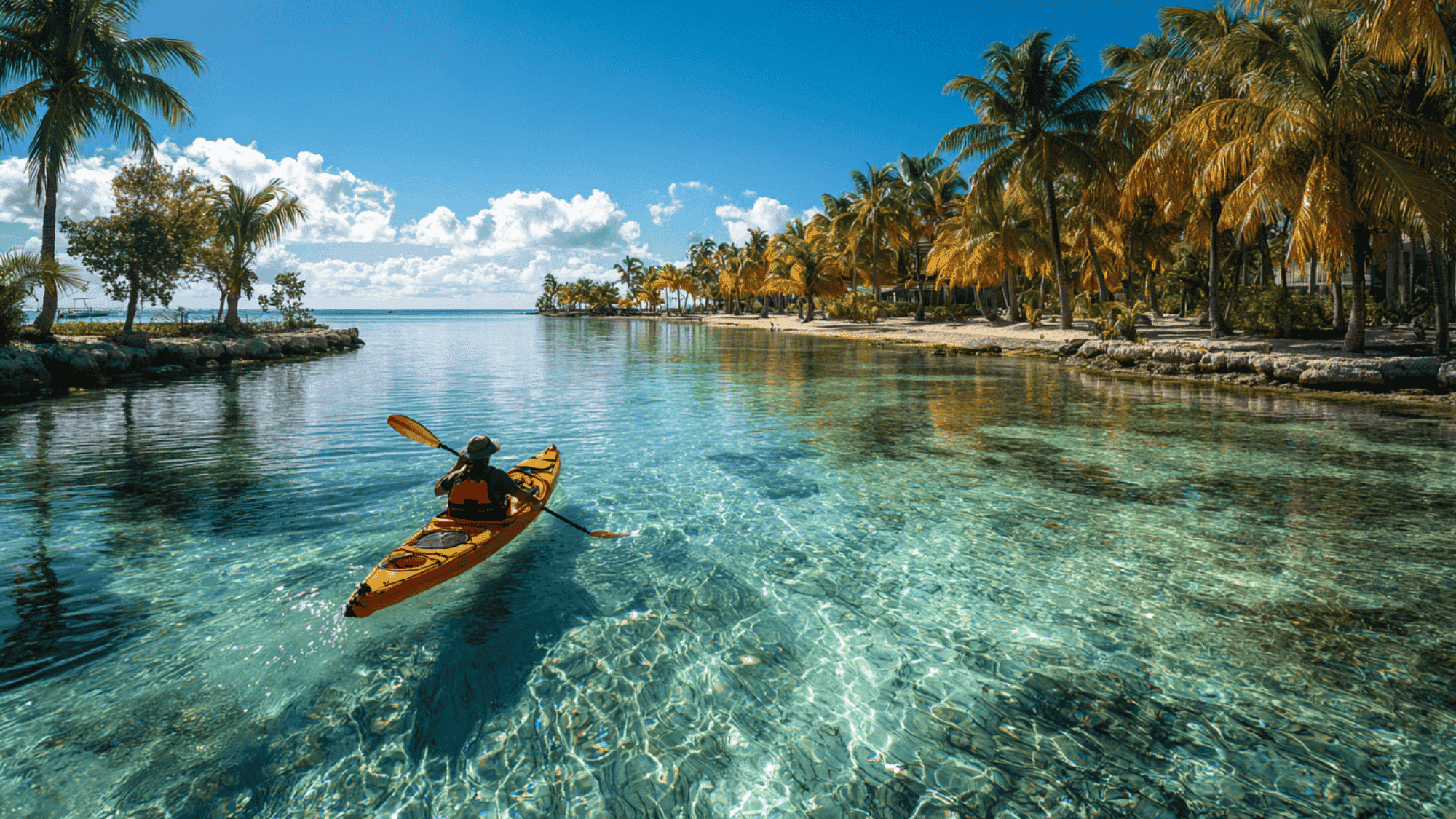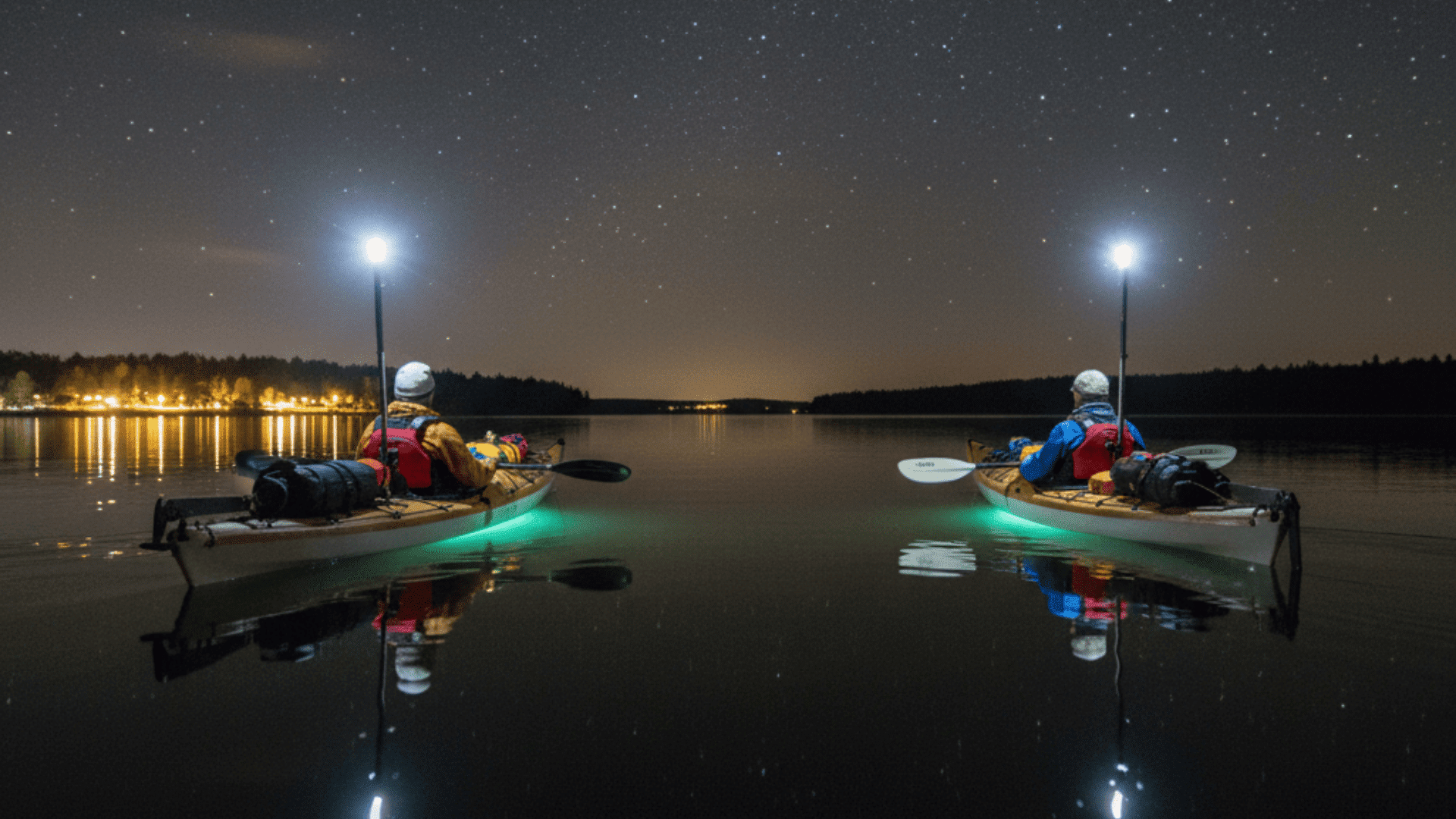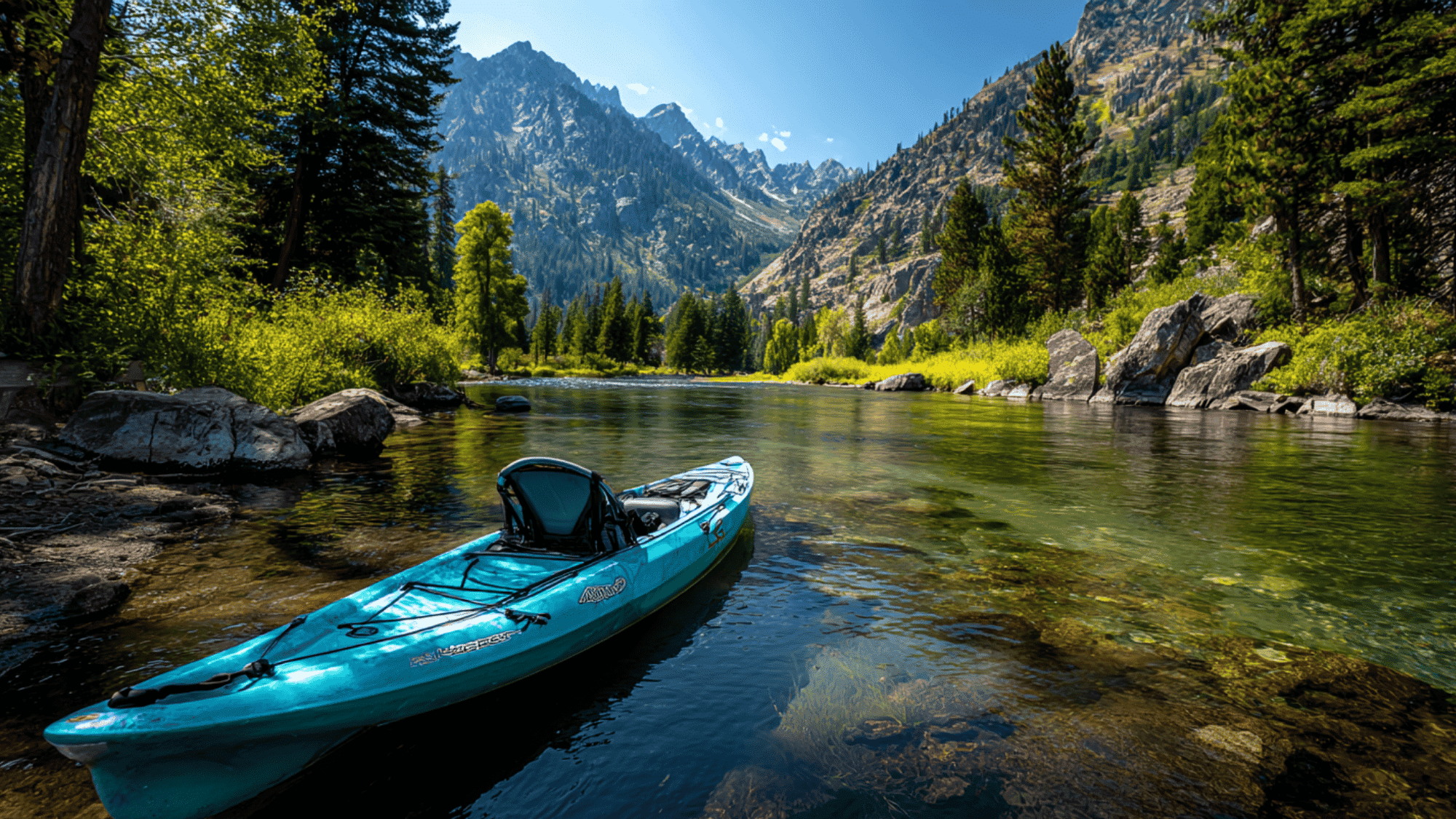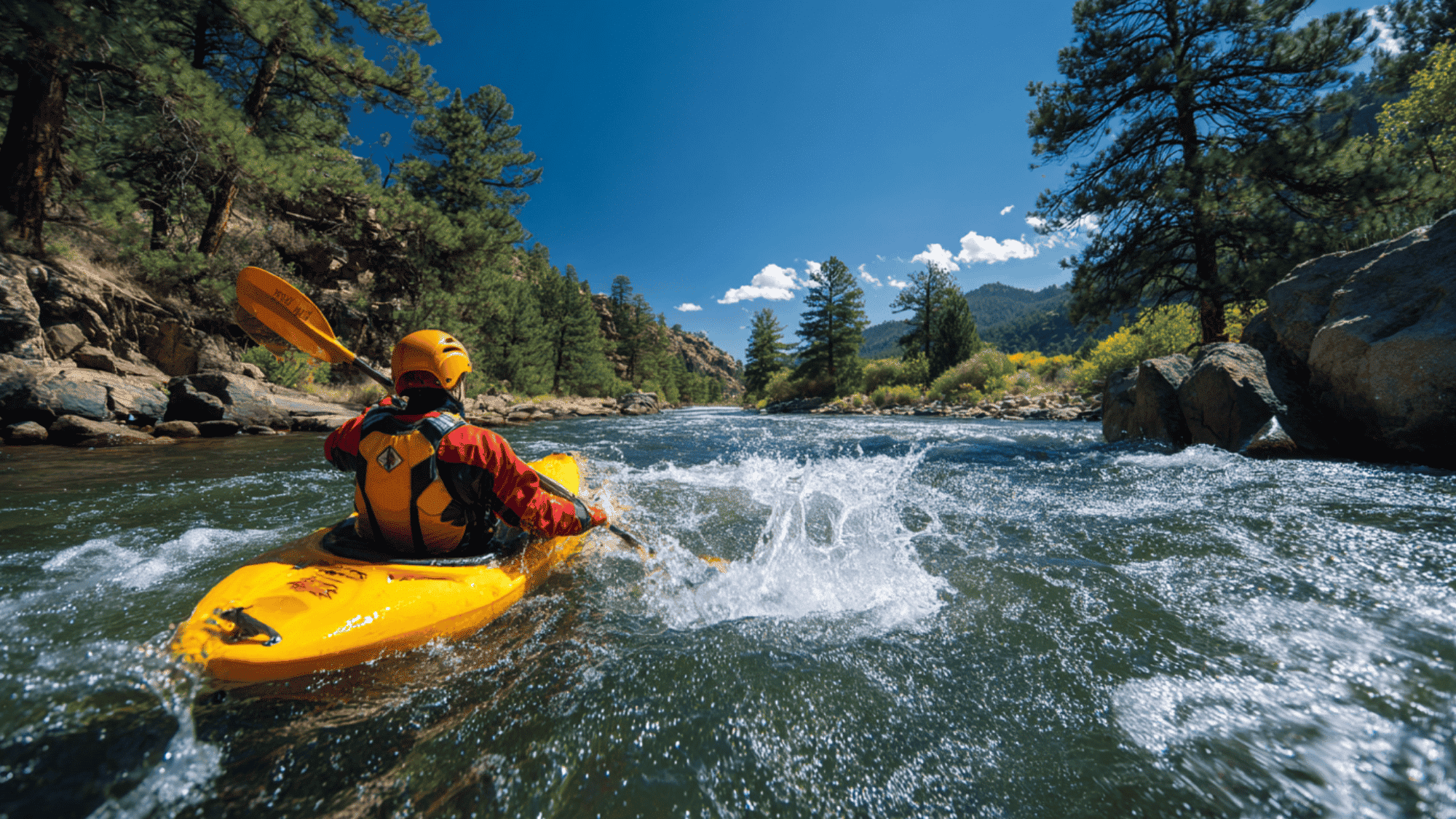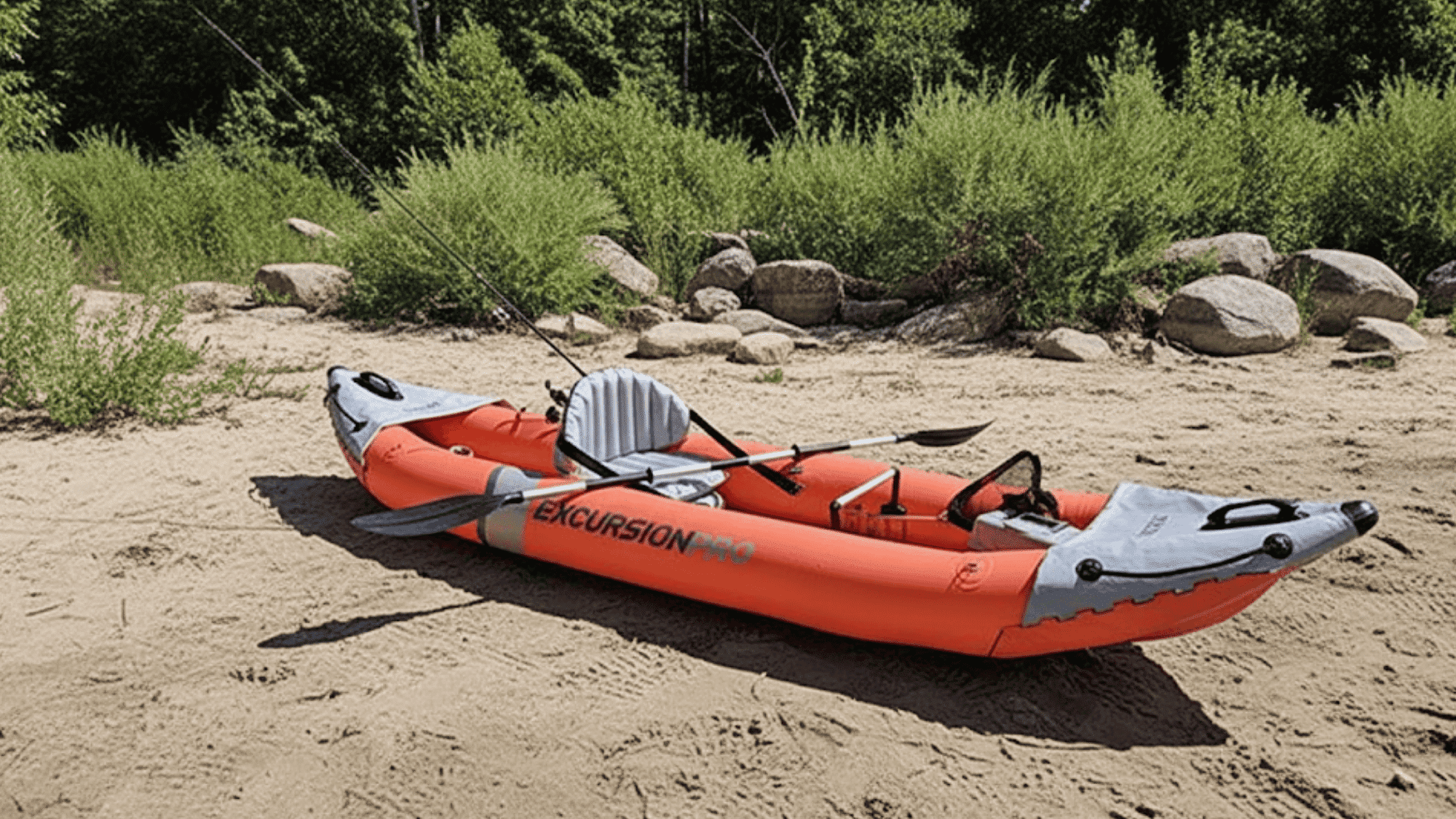Kayaking isn’t just about gliding across the water; it’s also a great way to stay active and burn calories.
Many people wonder how many calories are burned while kayaking, especially if they want to incorporate it into their fitness routine.
The answer isn’t the same for everyone, because the burn depends on things like body weight, effort level, and time spent paddling.
From your arms and shoulders to your core and back, kayaking engages multiple muscles simultaneously, making it a full-body activity.
Understanding the basics of calorie burn will help you see how this sport supports both fitness goals and overall health.
How Kayaking Burns Calories in the Body
When you paddle, your body works much harder than it might seem. Each stroke activates major muscle groups, your shoulders, arms, back, and core, while your legs help stabilize the kayak.
This constant movement raises your heart rate, which means your body needs more energy to keep going. That extra energy comes from burning calories.
On average, kayaking burns 300 to 500 calories per hour at a moderate pace, while vigorous paddling or tackling rapids can increase the burn to 800 calories or more per hour.
Unlike exercises that focus on a single area, kayaking spreads the effort across multiple muscles, creating a steady, full-body workout.
Over time, this combination of strength, endurance, and cardiovascular activity makes kayaking an effective way to burn calories.
Understanding MET Values for Kayaking
To determine the number of calories you burn while kayaking, it is helpful to understand something called MET, or Metabolic Equivalent of Task.
MET values are a way to measure the amount of energy an activity uses compared to the energy expended during rest. For example, sitting quietly is equivalent to 1 MET, while kayaking varies in intensity.
A relaxed paddle typically ranges from 2.8 to 5 METs, moderate effort is usually around 5 METs, and vigorous activities, such as whitewater kayaking, can reach 12.5 METs or more.
The higher the MET, the more calories your body uses in that time. These values are especially useful when combined with a simple formula that takes into account body weight and duration.
Knowing the MET range allows you to gain a clearer understanding of how hard your body is working and the number of calories you’re likely to burn.
Step-by-Step: Calculate Your Own Burns
Want to know how much energy you’re really using while paddling? By using a simple formula, you can estimate your own calorie burn instead of relying on broad averages.
|
Step 1: Find your weight in kilograms. Step 2: Choose the right MET value.
Step 3: Use the calorie formula. Step 4: Multiply by total minutes paddled. Example 1: A 90 kg person kayaking moderately (5 METs): Example 2: A 70 kg person kayaking vigorously (12.5 METs): |
By using this step-by-step method, you’ll get a clearer picture of how hard your body is working. It’s a practical way to connect your time on the water with your fitness goals.
What Affects Calorie Burn While Kayaking

Not everyone burns the same number of calories while kayaking. Several factors can affect the total, and understanding them helps you understand why your numbers may differ from those of someone else.
- Body Weight: Heavier individuals burn more calories because their bodies use more energy to move.
- Effort Level: Paddling at a steady, moderate pace burns fewer calories than racing or tackling whitewater.
- Duration: The longer you paddle, the more total calories you’ll burn, especially after the first 30 minutes.
- Water Conditions: Calm lakes require less effort, while currents, waves, and wind make your body work harder.
- Kayak Type: Wider, heavier kayaks (like fishing models) demand more effort compared to lightweight touring kayaks.
- Technique: Maintaining good posture and using strong, consistent strokes increases efficiency and overall calorie expenditure.
- Weather & Temperature: Cold environments may slightly increase calorie burn as your body works to maintain its temperature.
These factors show that calorie burn isn’t a one-size-fits-all number. By adjusting effort, technique, or environment, you can maximize the fitness benefits of each kayaking session.
Calories Burned by Body Weight & Effort
The number of calories burned during kayaking changes depending on both your weight and how hard you paddle.
The table below shows approximate calories burned per hour for different body weights at light, moderate, and vigorous effort levels.
| Body Weight | Light Effort (2.8 METs) | Moderate Effort (5 METs) | Vigorous Effort (12.5 METs) |
|---|---|---|---|
| 125 lbs (57 kg) | 168 cal/hr | 299 cal/hr | 747 cal/hr |
| 150 lbs (68 kg) | 201 cal/hr | 358 cal/hr | 895 cal/hr |
| 175 lbs (79 kg) | 233 cal/hr | 417 cal/hr | 1,043 cal/hr |
| 200 lbs (91 kg) | 266 cal/hr | 477 cal/hr | 1,194 cal/hr |
| 225 lbs (102 kg) | 299 cal/hr | 537 cal/hr | 1,341 cal/hr |
| 250 lbs (113 kg) | 332 cal/hr | 597 cal/hr | 1,490 cal/hr |
This table makes it easy to see how weight and paddling intensity directly affect calorie burn. Use it as a quick reference to estimate your own numbers and set realistic goals for your kayaking workouts.
Smart Ways to Burn More Calories While Kayaking

If you want to make the most of your time on the water, there are simple ways to boost the number of calories you burn while kayaking. Small adjustments in technique, pace, and environment can make a big difference.
- Mix Up Your Pace: Try interval paddling, alternate between fast, powerful strokes and slower recovery periods to increase calorie burn.
- Use Resistance Wisely: Paddle against currents, waves, or wind to challenge your muscles more.
- Lengthen Your Sessions: Calories add up the longer you’re on the water, especially after the first half hour.
- Perfect Your Technique: Strong, consistent strokes not only improve efficiency but also engage more muscle groups.
- Add Extra Moves: Include twists or core-focused paddling for a full-body workout.
- Choose the Right Equipment: Heavier kayaks or additional gear can increase the effort required, thereby raising energy consumption.
By combining good technique with smart strategies, you can turn an ordinary paddle into a powerful calorie-burning workout that strengthens your body and supports your fitness goals.
Kayaking Compared to Other Calorie-Burning Activities
Curious how kayaking stacks up against other common workouts? The table below shows approximate calories burned per hour for a 155-pound (70 kg) person across different activities, so you can see how paddling measures up.
| Activity | MET | Calories/hour |
|---|---|---|
| Paddling (moderate, canoe/row 4.0–5.9 mph) | 5.8 | 426 kcal |
| Walking (3.5–3.9 mph, level) | 4.8 | 353 kcal |
| Running (6.0–6.3 mph) | 9.3 | 684 kcal |
| Cycling (12–13.9 mph) | 8.0 | 588 kcal |
| Swimming (freestyle, slow/recreational) | 5.8 | 426 kcal |
| Hiking (moderate incline) | 6.0 | 441 kcal |
| Jump Rope (moderate pace) | 11.8 | 867 kcal |
| Stand-Up Paddleboarding (general) | 6.5 | 478 kcal |
Looking at these numbers, it’s clear that paddling provides a calorie burn on par with, or even higher than, many popular workouts.
It’s a flexible option for building strength and stamina while keeping fitness sessions fun and engaging.
Final Thoughts on Calories Burned While Paddling
When it comes to fitness, paddling offers more than just a fun day on the water; it’s also a powerful way to burn calories and strengthen your whole body.
The exact number of calories you’ll burn depends on your weight, effort, and environmental conditions, but even at a moderate pace, it can rival popular workouts like cycling or swimming.
Add in the mental health boost from being outdoors, and you’ve got a workout that benefits both body and mind.
If you’re aiming to lose weight, improve endurance, or simply enjoy an active hobby, paddling makes an excellent choice.
Ready to track your progress? Use a calorie calculator or fitness app to estimate your burn, then plan your next paddling session with confidence and purpose.


